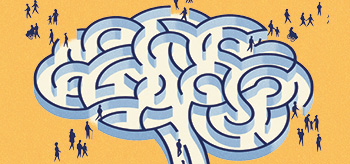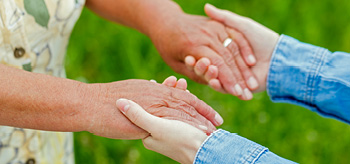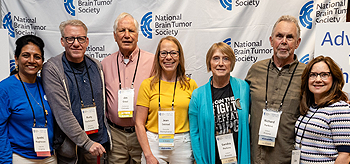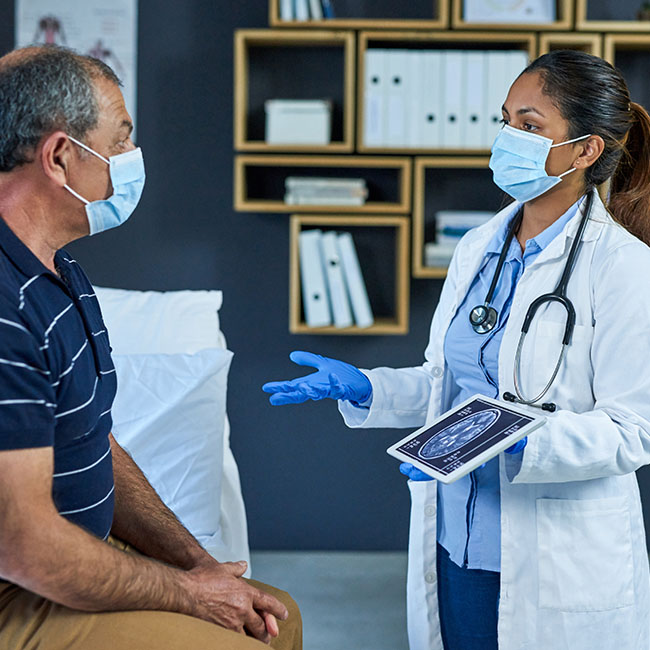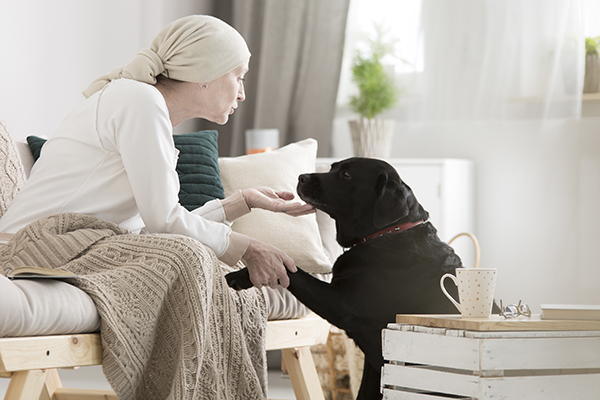Fatigue is one of the most common and debilitating challenges faced by people with brain tumors. Unlike ordinary tiredness, this type of fatigue can be relentless and impact every aspect of daily life. Understanding fatigue and learning how to manage it is key to improving quality of life for patients and their caregivers.
What is Fatigue?
Fatigue is a persistent sense of exhaustion that doesn’t go away with rest. It is a more intense lack of energy than typical tiredness and can significantly affect one’s ability to perform daily tasks.
Patients may experience physical fatigue, cognitive fatigue, or both, due in part to the tumor’s location and/or side effects from treatment or medication.
An article in CNS Oncology reports, “As in many other solid tumors, fatigue is frequently reported as the most common and distressing symptom in brain tumor patients throughout the disease trajectory, particularly patients facing high-grade gliomas.” The same article also shared, “among patients with low-grade glioma, 39% reported fatigue up to eight years after completion of therapy.”
Physical fatigue affects the body, making one feel heavy, weak, or unable to perform physical tasks. Cognitive fatigue affects the mind, causing difficulty with concentration, memory, or mental sharpness.
“Fatigue has been the hardest out of all of the symptoms because I feel that fatigue takes away from my quality of life,” said Tresa Roebuck Spencer*, a former clinical neuropsychologist with recurrent glioblastoma (GBM). “It makes it where I feel hesitant to go out because I never know when that fatigue is going to become too much. I find fatigue very limiting.”
What Does Physical Fatigue Feel Like?
While the experience of fatigue can vary, many people living with brain tumors describe it as a unique sensation that can have a significant impact.
Tresa said, “Sometimes it just feels like you would expect. I just feel tired and need to rest. Sometimes, when it’s really bad, it’s just an overall weakness. Sometimes it feels like I have a really heavy coat on, and it’s hard to just move through space and do normal activities.”
Eric Galvez, a former physical therapist living with meningioma, said, “Brain tumor fatigue just feels like things are heavy. It’s like you are moving in slow motion through a fog.”
How is “Regular” Fatigue Different From Brain Tumor Fatigue?
For many patients, the distinction lies in how unrelenting brain tumor fatigue can be, defying the usual remedies like rest or sleep.
Tresa said, “My husband will say, ‘If you’re tired, why don’t you take a nap?’ And I’ll say, ‘Well, this isn’t the kind of fatigue that I can take a nap and feel better.’ It’s almost like there’s a weight on me, and I need to just rest. But taking a nap doesn’t help it. It continues until it runs its course.”
Adding to this perspective, Carly N., who has glioblastoma, explains how brain tumor fatigue differs in its persistence and resistance to typical recovery methods.
“The difference is that if you’re really tired or exhausted, you can sleep it off, have a drink, or do your favorite activity and feel better the next day,” Carly shared. “But when you have a brain tumor, no matter how much sleep you get, you can’t shake the fatigue off easily.”
How Does Physical Fatigue Impact the Patient?
Physical fatigue can profoundly impact daily life, restricting mobility, self-care, independence, and the ability to work. Many patients experience a sharp contrast between their current stamina and what they could achieve before their diagnosis.
“During chemo and radiation treatments and upon returning to work, I physically felt exhausted,” Carly said. “My stamina dropped. I used to be able to work 11-12 hour days no problem, and now I’ve cut my hours in half.”
For many, the inability to engage in once-loved activities adds to the challenge.
“It is exhausting to have to sit down often throughout the day,” said Sharon H., who has meningioma. “I miss having all the energy I had before when I played tennis, worked all day long, and completed many tasks in a day.”
The emotional toll of fatigue often extends beyond the physical. Feelings of isolation and being misunderstood by others can compound the challenge. Many patients find it difficult to communicate the magnitude of their fatigue, leading to frustration when others don’t grasp the full impact of their condition.
What Can Patients Do to Manage Physical Fatigue?
Managing physical fatigue requires a multifaceted approach, from seeking medical guidance to implementing daily strategies that support energy conservation and recovery.
1. Talk to Your Health Care Team
Fatigue can be caused by a variety of factors. By letting your health care team know about your fatigue, they can perform any necessary evaluations or tests to ensure there are no other underlying causes.
The National Cancer Institute (NCI) recommends keeping “a daily log of your fatigue and what you are doing to manage it using the My STORI app or a journal” that can then be shared with your provider.
“I’ll say for me, the big thing was kind of drilling down on what caused the fatigue,” said Alex E., who was diagnosed with pineal germinoma during college. “I think the ongoing fatigue came from hormonal changes. When they did the radiation, it went through some of the hormonal glands in my brain, so it caused some issues. I met with an endocrinologist and was able to quickly come up with a solution that has been working for me.”
Your health care team can help create a personalized plan to manage fatigue, which may include adjusting medications, recommending occupational or physical therapy, or suggesting specific lifestyle changes tailored to your needs and abilities.
2. Prioritize and Plan
After a while, a patient may recognize a pattern of when they can expect to be fatigued.
“Through doing physical therapy, I’ve learned if I’m really tired and having more pain at the end of the day, I did too much that day,” Tresa said. “Since I’ve been doing this, I learned that while I did too much today, I need to make sure I rest a little bit more tomorrow.”
Recognizing patterns in fatigue helps with planning and allows you to set realistic expectations for your energy levels. As Melanie F. discovered during her treatment for diffuse astrocytoma, this self-awareness can be empowering.
“I had proton therapy five days a week,” Melanie explained. “We’d end on Friday, and I would just be so tired. Saturday was pretty useless. Sunday, I’d start coming around, and Monday, I was brand new. It was like following that cycle of knowing when the fatigue was going to hit.”
Try to plan ahead with that knowledge in mind. Prioritize important or more strenuous tasks when fatigue might be the most minimal and delegate whenever possible.
“When they need help with homework or other activities like writing essays for college applications, I’ve learned to share with them that I’m really tired and ask them to try to plan ahead,” said Pam**, who has glioblastoma. “If you need help to write this essay, can we do it earlier in the evening before dinner so that we don’t wait until 10 o’clock when I’m too tired? Or I’ll ask what the plan is for this week and what they need help with so we can plan ahead for which night will be best for me to help. I put it as I’m going to be more help to you if we do it earlier.”
3. Optimize Rest and Sleep
When a patient feels physical fatigue, a nap won’t necessarily resolve their fatigue in that moment. However, a consistent sleep schedule in an ideal environment — a quiet, dark room with a comfortable temperature — may help over time.
Short bouts of rest may help, but avoid taking too long of a nap as it may interfere with your sleep overnight.
“For me, siestas are the best way to recharge,” Eric said.
Other healthy sleep habits include avoiding caffeine, alcohol, and screens before bed.
4. Move Your Body
Gentle exercise, like walking, yoga, or stretching, can help improve energy levels over time. Talk to your health care team about whether exercise or other types of movement would be appropriate for you.
“I’ve noticed all along that — and I know this from my prior work as a psychologist as well — that when I’m fatigued, if I get up and move around and just do some kind of activity, as tolerated, that helps,” Tresa shared. “So even though my body doesn’t want to do anything, if I get up and do something, typically the fatigue will lift to some degree, and I’ll feel like I have a little bit of energy back. That has been probably the most helpful thing to me.”
On days when she could not move her body as much, Tresa found that engaging in a social activity, such as talking to a friend on the phone, helped improve her fatigue levels.
“The more I sit and do nothing, the more fatigued I get,” Tresa said. “It’s hard because you can’t do too much because doing too much will make you fatigued. But if you don’t do enough, then you get fatigued, so you have to find that balance of not stressing yourself but doing enough so that you do feel better.”
Robin K., who has glioblastoma, found her body less stiff when she did some type of daily movement.
“Cancer fatigue is one of the toughest hurdles I’ve faced, but I discovered that exercise helps,” Robin said. “Now, I’ll admit, I’m not a fan of exercise. But it’s undeniable that moving my body made a difference even when I didn’t feel like it. Staying in bed all day only made my body stiffer and more uncomfortable. Small, consistent efforts helped me feel better physically and mentally.”
Start small and increase activity gradually. Carly, who has GBM, found that going for daily walks to get fresh air and sunshine helped with her fatigue, noting that “it doesn’t have to be far, and you can work your way up over time.”
As both a patient and physical therapist, Eric found that “consistent exercise can help to make ‘the battery’ last longer. Periodic exercise helps consistently get the heart rate going.” He suggests finding a partner who can help you establish an exercise routine.
Patients can also work with a physical therapist to develop a tailored plan.
“Sometimes, [a physical therapist is] called in if they’re going through radiation,” said Earllaine Croarkin, a physical therapist at the Clinical Research Center at the National Institutes of Health (NIH). “After they’ve had the radiation a few weeks, they may experience a significant fatigue. Aerobic conditioning can help improve fatigue even though it might be the most counterintuitive thing to do. It can help reduce fatigue.”
5. Practice Good Nutrition and Hydration
Nutrition and hydration play a crucial role in proactively managing fatigue. Properly fueling and hydrating the body can help combat physical exhaustion and enhance overall energy levels.
“If my body and mind are feeling tired, and I’m starting to feel a little fuzzy, then I know I’ve done too much,” Tresa said. “I need to stop, drink some water, and take a break. I have learned to pay attention to when my body is telling me this isn’t good. Stop and rest.”
Your health care team can recommend a registered dietitian to provide direction for the type of food that will best meet your needs. The Academy of Nutrition and Dietetics’ website also allows you to search for experts in your area.
Carly suggests, “Drink lots of water and eat smaller meals more frequently throughout the day.”
6. Be Patient With Yourself
Fatigue is a legitimate medical symptom and one of the most common challenges faced by people living with brain tumors. Acknowledging this reality and giving yourself grace as you navigate it is important.
“Be patient with yourself,” Carly said. “It’s going to take time for your brain to heal and reestablish that mind-body connection again. Take it day by day. You’re going to have good and bad days.”
After Melanie began proton radiation as part of her treatment for diffuse astrocytoma, her husband told her that “fatigue is not weakness.” Hearing that galvanized Melanie, and she encouraged others to remind themselves of that.
“I am very Type A and always go-go-go,” Melanie said. “When you can’t do everything, you start to feel bad about yourself. Like why can’t I do all these things? What’s wrong with me? But fatigue is a real issue, and fatigue isn’t a sign of weakness. You have to lean into it, essentially. We all need to give ourselves some grace, some space, and the ability to just breathe.”
7. Seek Support
Fatigue is a real and significant challenge for people living with brain tumors, but seeking out support can help manage and mitigate its effects.
- Talk to your health care team for guidance. As addressed above, your health care team can ensure that no underlying causes need to be addressed while recommending other providers, such as therapists and registered dieticians, to ease your fatigue.
- Join a support group. Connecting with others living with brain tumors can be validating and provide helpful tips. These groups may be local or virtual, like NBTS’s Brain Tumor Support Conversations, which provides a welcoming space to share experiences.
- Lean on family and friends. Don’t hesitate to ask family and friends for assistance with daily tasks, errands, or meal preparation. Having the energy to plan meals, go grocery shopping, and cook can be challenging. Delegating can help conserve energy.
- Use technology to help. There are apps that can assist you with the coordination of meals and other tasks. You can also use apps like My STORI, Visible: Pacing for Illness, and Bearable to monitor your fatigue, look for patterns, and then discuss them with your health care team.
By experimenting with strategies and seeking support from others, you can find what works best for you.
* Note: Tresa passed from recurrent glioblastoma after NBTS interviewed her on the topic of fatigue. With her family’s support, we share Tresa’s perspective and tips for managing fatigue in this blog post.
** Note: NBTS altered this patient’s name to protect the privacy of the quoted individual.
